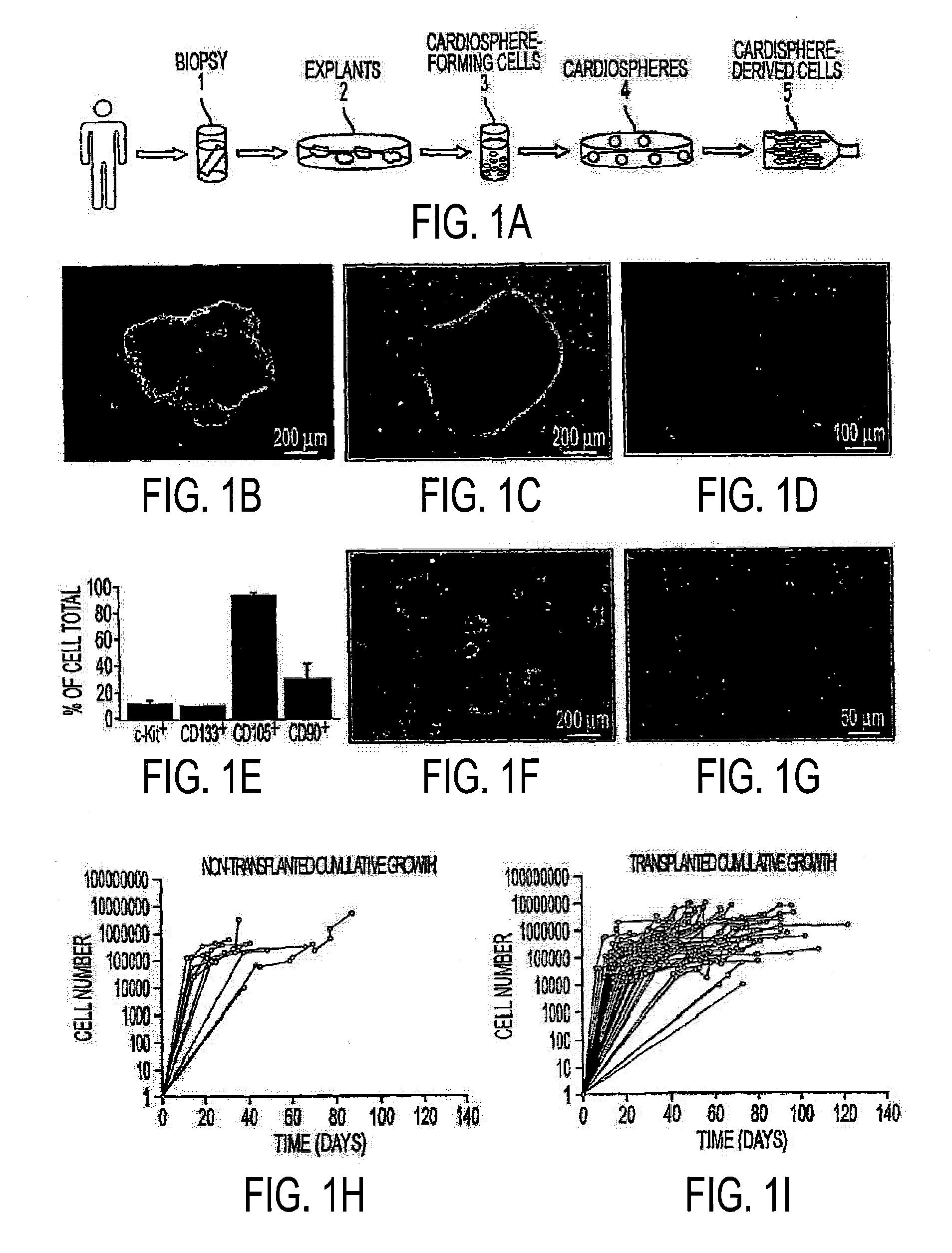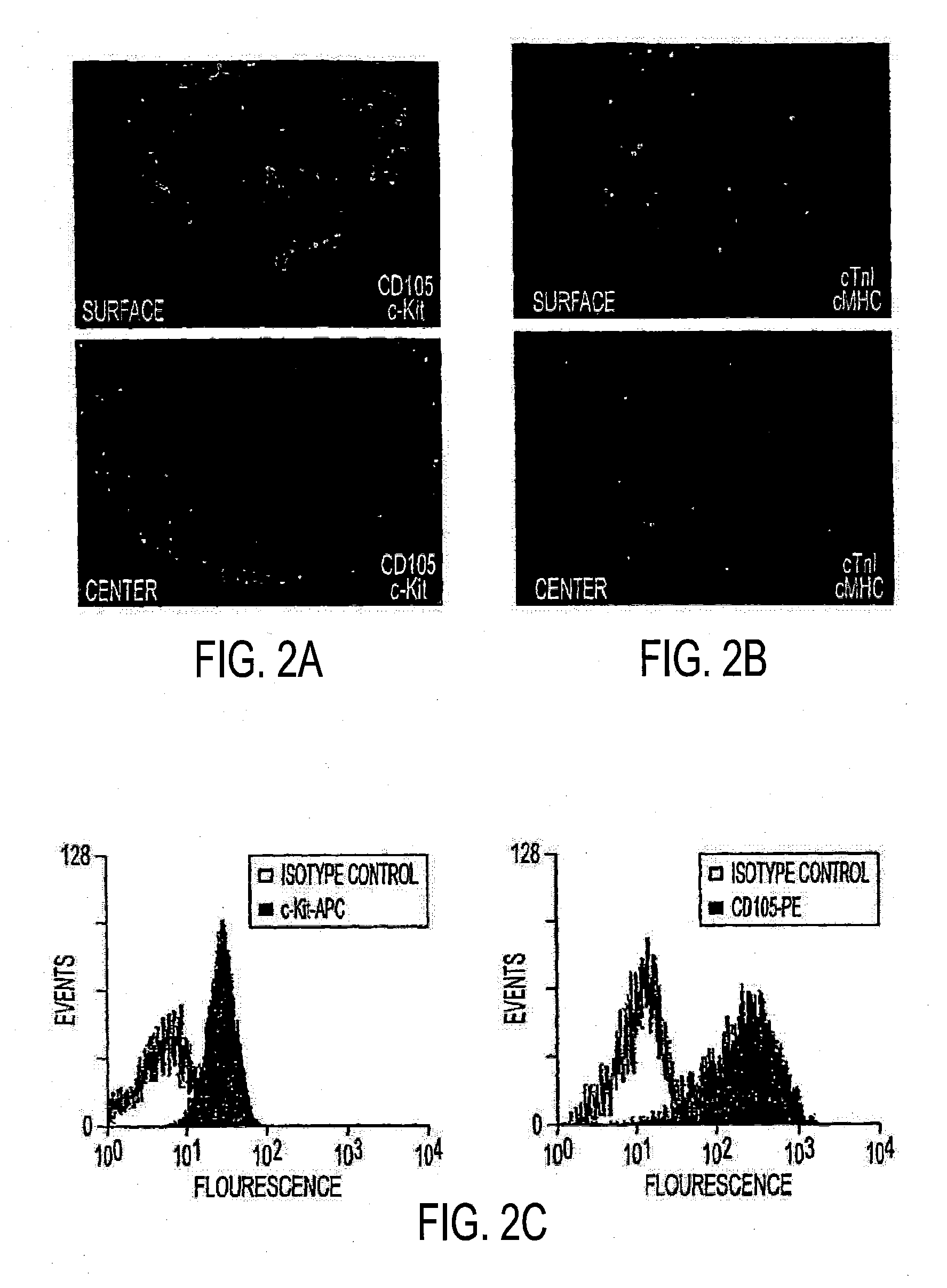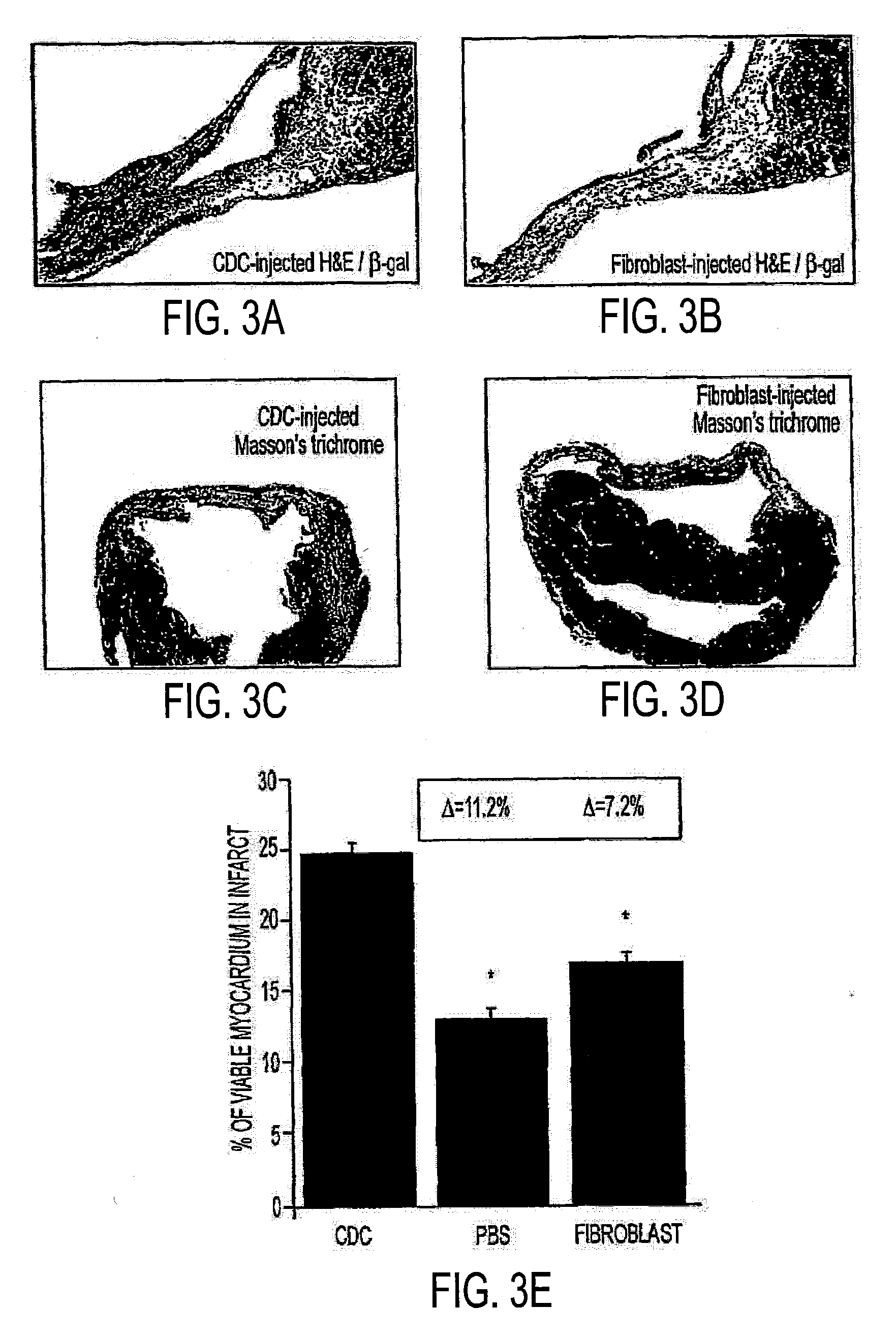Methods of Reducing Teratoma Formation During Allogeneic Stem Cell Therapy
a stem cell therapy and allogeneic technology, applied in the field of regenerative cells, can solve the problems of cardiac tissue cardiac tissue can be obtained from hearts deemed unsuitable for transplantation, and the quality of life can be reduced, so as to improve the viability or function of damaged cardiac tissue, improve the function of left ventricular function, and reduce the size of infar
- Summary
- Abstract
- Description
- Claims
- Application Information
AI Technical Summary
Benefits of technology
Problems solved by technology
Method used
Image
Examples
example 1
Specimen Processing and Cardiosphere Growth
[0225]Following institutional guidelines, and with patient consent, human biopsy specimens were obtained from patients undergoing clinically-indicated percutaneous endomyocardial biopsy and processed as described above, with certain modifications. Specimens consisted of whole or partial bioptome “bites”, stored on ice in high-potassium cardioplegic solution and processed within two hours (FIG. 1A, step 1). As discussed, herein, samples, in some embodiments, are taken from whole donor hearts (e.g., not collected via biopsy). Samples were cut into fragments from which gross connective tissue was removed. The fragments were then washed, partially-digested enzymatically, and the single cells discarded. In several embodiments, partial digestion is accomplished using trypsin. In some embodiments, collagenase is used. In some embodiments, other proteases may be used. The remaining tissue fragments were cultured as “explants” on dishes coated with ...
example 2
Specimen Processing and Cardiosphere-Forming Sub-Populations
[0235]FIG. 1B shows a typical explant, after mincing and partial enzymatic digestion, on the day it was obtained and also on days 3 (FIG. 1C) and 13 (FIG. 1D), immediately prior to first harvest. Harvesting of cardiosphere-forming cells (FIG. 1A, step 3) was initially performed 8 or more days after obtaining a specimen and at 4-12 day intervals thereafter. Panel E summarizes the results of sub-population selection experiments performed using cells harvested from 3 different patient specimens. The large majority of the cells that generate cardiospheres are CD105+, those that are c-kit+ and those that are c-kit−. Typical cardiospheres are shown in FIG. 1F, 12 days after harvest. Floating cardiospheres were plated for expansion (FIG. 1A, step 5) 4-28 days after step 3 and passaged at 2-7 day intervals thereafter. FIG. 1G shows CDCs plated on fibronectin during expansion at passage 2, when those cells were harvested for injecti...
example 3
Patient Specimens and Cardiosphere Growth
[0236]83 patient specimens (21.0±1.9 mg) were obtained for analysis. 72 of the specimens were obtained from patients who had received a heart transplant and 11 were from patients awaiting transplant. Nine transplanted patients donated multiple specimens. 78 of 83 specimens were processed, and 4 of those specimens never harvested were from repeat patients, yielding growth data from 69 of 70 patients. Cumulative growth curves for each specimen are depicted in FIG. 1, Panels H and I. The growth curves from patients awaiting transplant (FIG. 1H) are similar to those from transplanted patients (FIG. 1I), showing a wide range of growth potential among specimens. Patient parameters are summarized in Table 2 for the non-transplanted and transplanted groups. A GEE analysis involving all patient parameters listed in the table revealed no independent predictors for high cell yield within the non-transplanted group. Within the transplanted group, specime...
PUM
 Login to View More
Login to View More Abstract
Description
Claims
Application Information
 Login to View More
Login to View More - R&D
- Intellectual Property
- Life Sciences
- Materials
- Tech Scout
- Unparalleled Data Quality
- Higher Quality Content
- 60% Fewer Hallucinations
Browse by: Latest US Patents, China's latest patents, Technical Efficacy Thesaurus, Application Domain, Technology Topic, Popular Technical Reports.
© 2025 PatSnap. All rights reserved.Legal|Privacy policy|Modern Slavery Act Transparency Statement|Sitemap|About US| Contact US: help@patsnap.com



